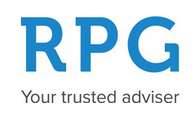
One of my customers has gone into an Insolvency Process – will I be paid?
10th April 2025, 1:46 pm
“Will I still be paid” is a question likely to be have been asked by suppliers to the many companies that were placed into a formal insolvency procedure during 2024. We explain what to do if you are in this position. Given the current economic pressures, it is anticipated that there will be more insolvent businesses during 2025 particularly in industries which are most at risk. So, be prepared and follow our advice to minimise your potential liability in future
The majority of company insolvencies are Creditors Voluntary Liquidations, (“CVL’s”), so we will take a look at the process for them:
- You should be notified by an Insolvency Practitioner (IP) prior to the CVL and provided with the Notice of Decision Procedure which explains the whole process, the date at which the Company will enter into CVL and the name of the IP to be appointed as the Liquidator. You will also be provided with a Report to Creditors, which sets out the trading history of the company, the Statement of Affairs and a Proof of Debt form to enable your claim to be submitted.
- Check the Statement of Affairs to ensure that your liability is correctly listed and notify the nominated IP if anything is missing.
- It is important to note that at this stage a creditor cannot object to a company entering into CVL, as it is the members/shareholders who pass resolutions to wind up the Company.
- Check the terms and conditions of your contract with the customer. If it includes Retention of Title clauses, you should alert the IP immediately as you may be able to recover goods that have not been paid for.
- It is also important to notify any trade credit insurances as you may be able make a claim.
- You will be notified once the company has formally entered into CVL and sent a questionnaire which you should complete and return with details of all unpaid invoices, copies of the contracts and any supporting documentation.
- Notice of the CVL will also be filed at Companies House and in the London Gazette.
Let’s look at the reality of how much you are likely to be paid.
The IP has a duty to realise assets for the benefit of creditors, however recoveries may be limited as priority is given to preferential creditors such as employees’ unpaid wages, accrued holiday pay and pension contributions; and then HMRC, VAT and PAYE.
As an unsecured creditor, it may be worth seeking advice from your own IP about what further steps you can take. You will be able to claim VAT relief on bad debts after 6 months and you should discuss with your accountant how to write off the debt for tax purposes.
How to minimise your potential liability in future
- Always carry out credit checks before trading with a new customer and investigate any red flags
- Set very clear credit terms and limits including penalties for late payment.
- Request Personal Guarantees from the company’s directors.
- Ensure you have a Retention of Title clause so the goods remain yours until you have received payment.
- Make sure your own bookkeeping is robust and you monitor all payments very carefully.
- Follow up any unpaid invoices immediately and stop supplying or request pre payment if payments are delayed.
More businesses are likely to become insolvent during 2025 so take action to protect against bad debts as soon as possible. Your accountant will be able to provide more information on this but always speak with an IP if you have unpaid debts for the best advice on how to recover them. We are always happy to have a free of charge conversation about your own personal circumstances.
Inheritance tax changes for business owners: Are you prepared?